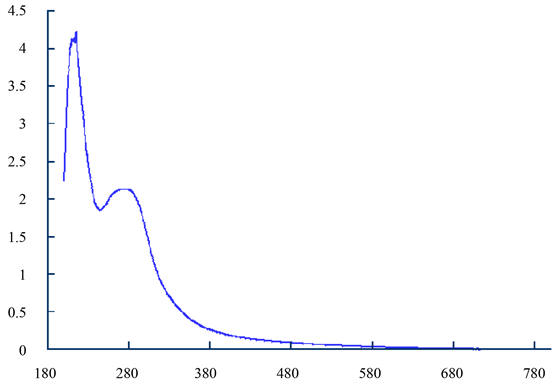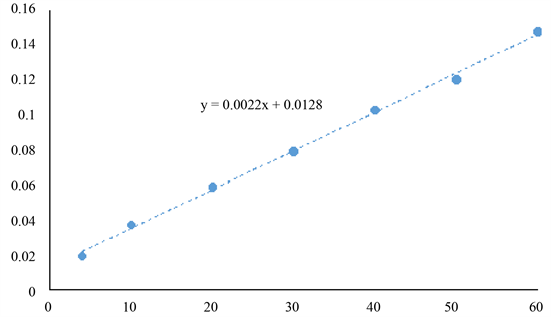Abstract:
Objective: To observe the lipid-lowering effect of black beans and black rice poria formula and analysis its effective components. Methods: Components analysis was done by spectrophotometry. 30 cases of patients with high blood lipids, taking the lipid-lowering formula powder for 20 days, with the detection of blood lipid changes before and after lipid-lowering powder taking. 30 experimental mouse, were randomly divided into control (C) group, high fat diet (HFD) group, high fat diet plus lipid-lowering powder (LLP) feeding group for a week, detecting the change of blood lipid. Result: The content of isoflavone was 3.8% (3.8% ± 0.5%) in the formula. In patients with hyperlipidemia, the total effective rate of the lipid-lowering powder was 96.7%, triglyceride (TG), total cholesterol (TC) decreased significantly (p < 0.05), low density lipoprotein (LDL) slightly decreased, high density lipoprotein (HDL) slightly elevated compared to that of the control. In mice experiments, TC of the high fat diet plus lipid-lowering food feeding group was significantly decreased (p < 0.01) compared with high fat diet group. Conclusion: The black bean black rice poria powder formulation is rich in isoflavone, has lipid-lowering effects in patients with hyperlipemia and experimental hypercholesterolemia mice, which can be safely and effectively used for lipid-lowering treatment. The effective components in the formula need further elucidation.
1. 引言
到目前为止,用于降脂的绝大多数药物是他汀、贝特及烟酸类化学药物 [1] [2] ,然而在临床上,许多患者在长期接受他汀类等治疗后,由于其产生的治疗副作用而停止用药,这已成为提高血脂达标率的重要障碍。因此,天然食品或中药降脂可能具有独特的优势,研发患者依从性强的食疗保健食品或中药降脂保健药物,将有显著的临床价值。目前我国18岁以上人群中血脂异常率达18.6%,约有1.6亿血脂异常患者 [2] 。对降脂保健食品有效成分进行研究开发,对心血管疾病的防治具有重要意义。
我国早有食用黑色食品强身健体,治疗疾病,延年益寿的传统 [3] 。与普通食品相比,黑色食品不但有很高的营养价值,而且富含提高人体免疫力和抗氧化作用的异黄酮、花青素等物质,因而是药食两用的保健佳品。
本研究观察黑豆黑米茯苓原粮配方制剂 [4] 的降脂效果,对比其对高血脂患者和实验性高血脂动物模型的降脂作用。
2. 材料和方法
黑豆黑米茯苓配方组成:黑豆、黑米、茯苓、山楂、薏米、灵芝、决明子。均从市场购得。
称取降脂粉1克,溶于75%乙醇,乙醇定容至25 ml,室温静置1小时取上清液,用紫外–可见光分光光度计做光谱扫描,测定吸收光谱,分析主要成分,并用下述标准曲线计算异黄酮含量。
称取5-甲基-7-甲氧基异黄酮标准品5 mg,溶于75%乙醇并定容至25 ml,分别取0.25 ml、0.5 ml、1 ml、1.5 ml、2 ml、2.5 ml、3 ml标准品溶液,定容至10 ml,用75%乙醇做空白对照,在325 nm测各个浓度标准液的吸光值,以标准液浓度为横坐标,吸光度为纵坐标做标准曲线。
40~70岁高血脂患者30例,男女均有,服用上述降脂粉剂加工粉剂20克/天,连续服用20天,用降脂粉剂前后均静脉取血一次检测血脂四项指标的变化:即血清TG、TC、LDL、HDL。血脂四项任一指标变化±15%或以上为有效。实验动物为近交系昆明小白鼠,由黄淮学院动物中心提供。选20周龄雌性、雄性小白鼠共30只,随机分为对照组、高脂饲料喂养组、高脂饲料加降脂粉剂喂养组各10只,分别以不同饲料喂养一周后,戊巴比妥钠腹腔注射麻醉(50 mg/Kg)后摘除眼球取血,血液离心4000转/分15分钟,取血清检测血脂TG和TC。高脂饲料组成:普通饲料90%、食品级胆固醇2%、猪油7.5%、胆盐0.5%。检测仪器:RE-52C旋转蒸发仪(上海亚荣仪器公司);721分光光度计(上海佑科仪器公司);血脂检测试剂盒(长春汇力生物技术公司);5-甲基-7-甲氧基异黄酮标准品(上海如吉生物科技发展有限公司)。
对测量数据进行统计学处理,数据均值±标准差(X ± sd)表示,用Sigmaplot 10进行统计学分析,组间采用单因素方差分析(ANOVA)或t检验,p < 0.05为有显著性统计学意义。
3. 结果
降脂粉乙醇提取液的扫描光谱图显示在紫外区220 nm和280 nm附近有两个吸收带(图1),符合异黄酮的特征吸收光谱;在500~540 nm可见光区没有出现花青素的特征吸收峰。
5-甲基-7-甲氧基异黄酮标准曲线显示在4~60 μg/ml范围内呈较好的线性关系(图2),以5-甲基-7-甲氧基异黄酮计量降脂粉异黄酮含量为3.8% (3.8% ± 0.5%)。
30例血脂异常患者服用黑米黑豆茯苓配方降脂粉剂20日前(Control)后(LLP)血脂四项检测指标有效率达96.7% (29例患者用本降脂粉剂后出现不同程度的血脂改善),甘油三酯(TG)、总胆固醇(TC)有显著降低(p < 0.05),低密度脂蛋白(LDL)轻度降低,高密度脂蛋白(HDL)轻度升高。如表1。在试用剂量下没有任何不良反应。
高脂饲料加降脂粉剂喂养组(LLP)小白鼠的TC比高脂饲料喂养组(HFD)显著降低(p < 0.01)。表2。HFD组比C组血清TC明显增加(p < 0.01),三组间血清TG变化无显著性差别。

Figure 1. Ethanol extract powder of scanning spectra
图1. 降脂粉乙醇提取液的扫描光谱图

Figure 2. 5-methyl-7-methoxy isoflavone standard curve
图2. 5-甲基-7-甲氧基异黄酮标准曲线

Table 1. Effect of black bean, black rice and poria powder formula on blood lipids in Hy- perlipidemic Patients
表1. 黑豆黑米茯苓降脂粉配方对高血脂患者的作用
*p < 0.05.

Table 2. Effect of black bean, black rice and poria powder formula on blood lipids in Mice
表2. 黑豆黑米茯苓降脂粉配方对高血脂小鼠的作用
*p < 0.05 vs C; **p < 0.01 vs HFD.
4. 讨论
光谱分析显示黑豆降脂粉剂富含异黄酮,未检出花青素成分。可能是加工过程中花青素被热降解所致。
临床医学认可的人体血脂达标值是其正常上限,即总胆固醇 < 5.20毫摩尔/升(200毫克/分升),甘油三脂 < 1.70 mM (150毫克/分升),低密度脂蛋白胆固醇(LDL-C) < 3.12 mM (120毫克/分升),高密度脂蛋白胆固醇(HDL-C) > 1.02 mM (40毫克/分升)。本实验30例血脂异常患者服用本降脂粉剂有效率达96.7%,血清TG和TC显著性下降,对LDL和HDL有不同程度的改善作用。对30只实验小白鼠进行不同的饲料喂养方法,血清检测结果显示高胆固醇饲料喂养能有效地提高血胆固醇水平,降脂粉剂添加后喂养能有效预防高血脂的发生。
黑豆,自古即入药,是药食两用的保健佳品。黑豆因含有丰富的营养,故有“豆中之王”的美称,其蛋白质含量高达49% (黄豆的蛋白质含量约为36%),其中人体8种氨基酸种类齐全,并富含油酸及亚油酸和大豆异黄酮,这类不饱和脂肪酸及大豆异黄酮具有降低胆固醇的作用,对预防高血压血管硬化、冠心病等大有益处 [5] 。黑豆中还含有丰富的磷脂、胆碱等对神经系统有保健作用的物质及维生素E等抗衰老物质,对于预防老年性痴呆和记忆力减退及延缓机体老化有特殊功效。所以,黑豆是中老年人保健食谱中不应缺少的营养食品,更是值得推荐和重点开发的保健食品。
黑米是我国优异的稻种资源,种皮富含花色苷类物质。凌文华、刘岱琳博士、张名位等 [6] [7] [8] [9] [10] 报道了膳食黑米和黑米皮不仅可以降低实验动物的血脂水平、抑制动脉粥样硬化的发生和发展,还可以降低机体氧化应激水平和提高抗氧化酶活性,并在动物实验中发现该作用与其花色苷类物质与肠道胆固醇的逆向转运有关。
据现代医学检测,茯苓含有效成分茯苓多糖达90%以上,茯苓多糖不仅能增强人体的免疫功能,特别是能调整T细胞亚群的比值,增强机体免疫功能,改善机体状况,增加抗感染能力,而且有较强的抗癌作用。此外还含有丰富的茯苓酸、卵磷脂、组氨酸等。这些有效成分的检出,确证了茯苓的药食两用价值和补益延寿的功效 [3] [11] [12] 。
薏米,在我国有悠久的栽培历史,它营养价值高,被誉为“世界禾本科植物之王”;它药食兼优,在欧洲被称为“健康之禾”;在日本被列为“防癌食品”。其抗癌的有效成份为薏苡仁酯,薏仁内酯等,能有效抑制癌细胞的增殖,薏苡仁对链左霉素诱导的糖尿病大鼠的血糖和血脂代谢,有重要的调控作用 [13] [14] 。常食薏米,能使身体轻捷,减少肿瘤发病的机会。薏米还是一种美容食品,常食可以保持人体皮肤光泽细腻,消除粉刺,色斑,改善肤色,在药膳中也应用广泛,被列为宫廷膳食之一。
根据本实验结果及以上研究显示,黑豆黑米茯苓配方降脂粉剂对高血脂患者和实验性高胆固醇小白鼠有明确的降脂效果,可以安全有效地用于人体降血脂治疗和预防实验动物高血脂的发生,其有效成分值得进一步研究。
致谢
本研究受河南省科技攻关项目(项目编号:112102310133,122102310263)和河南省国际合作项目(项目编号:152102410004),驻马店市科技攻关项目(编号:12305)资助;感谢黄淮学院俞淼博士在光谱扫描实验中的技术支持。
NOTES
*通讯作者。